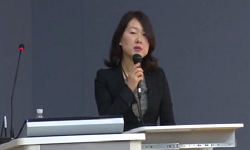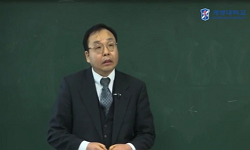Purpose: The aim of the present study was to compare the prevalence of self-reported and confirmable allergic rhinitis (AR) with positive skin pricktest (SPT) results among adults living in urban and rural areas of China. Methods: Adults from a commun...
http://chineseinput.net/에서 pinyin(병음)방식으로 중국어를 변환할 수 있습니다.
변환된 중국어를 복사하여 사용하시면 됩니다.
- 中文 을 입력하시려면 zhongwen을 입력하시고 space를누르시면됩니다.
- 北京 을 입력하시려면 beijing을 입력하시고 space를 누르시면 됩니다.



Prevalence of Allergic Rhinitis Among Adults in Urban and Rural Areas of China: A Population-Based Cross-Sectional Survey
한글로보기https://www.riss.kr/link?id=A104768692
-
저자
Ming Zheng (Capital Medical University) ; Xiangdong Wang (Capital Medical University) ; Mingyu Bo (Capital Medical University) ; Kuiji Wang (Capital Medical University) ; Yan Zhao (Capital Medical University) ; Fei He (Capital Medical University) ; Feifei Cao (Capital Medical University) ; Luo Zhang (Capital Medical University) ; Claus Bachert (Ghent University Hospital)

- 발행기관
- 학술지명
- 권호사항
-
발행연도
2015
-
작성언어
English
- 주제어
-
등재정보
KCI등재,SCIE,SCOPUS
-
자료형태
학술저널
-
수록면
148-157(10쪽)
-
KCI 피인용횟수
15
- 제공처
-
0
상세조회 -
0
다운로드
부가정보
다국어 초록 (Multilingual Abstract)
Purpose: The aim of the present study was to compare the prevalence of self-reported and confirmable allergic rhinitis (AR) with positive skin pricktest (SPT) results among adults living in urban and rural areas of China. Methods: Adults from a community in Beijing and a village in Baoding wereselected as representative urban and rural dwellers, respectively. All eligible residents were enrolled from the population register and received aface-to-face interview using modified validated questionnaires. Equal sets of randomly selected self-reporting AR-positive and AR-negative participantswho responded to the questionnaires were also investigated using skin prick tests. Results: A total of 803 participants in the rural area and atotal of 1,499 participants in the urban area completed the questionnaires, with response rates being 75.9% and 81.5% respectively. The prevalenceof self-reported AR of the rural area (19.1%) was significantly higher than that of the urban area (13.5%). The elementary school of educational levelincreased the risk of having AR (adjusted OR=2.198, 95% CI=1.072-2.236) .The positive SPT rates among subjects with self-reported AR in therural and urban areas were 32.5% and 53.3%, respectively; the confirmable AR prevalence of 6.2% and 7.2% among the rural and urban adults, respectively.
Conclusions: The prevalence of confirmable AR is similar between rural and urban areas in China, although there is a higher prevalenceof self-reported AR in the former.
다국어 초록 (Multilingual Abstract)
Purpose: The aim of the present study was to compare the prevalence of self-reported and confirmable allergic rhinitis (AR) with positive skin prick test (SPT) results among adults living in urban and rural areas of China. Methods: Adults from a commu...
Purpose: The aim of the present study was to compare the prevalence of self-reported and confirmable allergic rhinitis (AR) with positive skin prick test (SPT) results among adults living in urban and rural areas of China. Methods: Adults from a community in Beijing and a village in Baoding were selected as representative urban and rural dwellers, respectively. All eligible residents were enrolled from the population register and received a face-to-face interview using modified validated questionnaires. Equal sets of randomly selected self-reporting AR-positive and AR-negative participants who responded to the questionnaires were also investigated using skin prick tests. Results: A total of 803 participants in the rural area and a total of 1,499 participants in the urban area completed the questionnaires, with response rates being 75.9% and 81.5% respectively. The prevalence of self-reported AR of the rural area (19.1%) was significantly higher than that of the urban area (13.5%). The elementary school of educational level increased the risk of having AR (adjusted OR=2.198, 95% CI=1.072-2.236) .The positive SPT rates among subjects with self-reported AR in the rural and urban areas were 32.5% and 53.3%, respectively; the confirmable AR prevalence of 6.2% and 7.2% among the rural and urban adults, respectively.
Conclusions: The prevalence of confirmable AR is similar between rural and urban areas in China, although there is a higher prevalence of self-reported AR in the former.
참고문헌 (Reference)
1 Zacharasiewicz A, "What proportion of rhinitis symptoms is attributable to atopy?" 56 : 385-390, 2003
2 Guner SN, "The prevalences of allergic diseases in rural and urban areas are similar" 39 : 140-144, 2011
3 Nathan RA, "The prevalence of nasal symptoms attributed to allergies in the United States: findings from the burden of rhinitis in an America survey" 29 : 600-608, 2008
4 Crockett AJ, "The changing prevalence of asthma-like respiratory symptoms in South Australian rural schoolchildren" 31 : 213-217, 1995
5 Worldwide variation in prevalence of symptoms of asthma, allergic rhinoconjunctivitis, and atopic eczema: ISAAC, "The International Study of Asthma and Allergies in Childhood (ISAAC) Steering Committee" 351 : 1225-1232, 1998
6 Aas K, "Standardization of diagnostic work in allergy" 45 : 57-60, 1973
7 Bråbäck L, "Social class in asthma and allergic rhinitis: a national cohort study over three decades" 26 : 1064-1068, 2005
8 Mpairwe H, "Skin prick test reactivity to common allergens among women in Entebbe, Uganda" 102 : 367-373, 2008
9 Valet RS, "Rural health disparities in asthma care and outcomes" 123 : 1220-1225, 2009
10 Kim YK, "Role of environmental exposure to spider mites in the sensitization and the clinical manifestation of asthma and rhinitis in children and adolescents living in rural and urban areas" 32 : 1305-1309, 2002
1 Zacharasiewicz A, "What proportion of rhinitis symptoms is attributable to atopy?" 56 : 385-390, 2003
2 Guner SN, "The prevalences of allergic diseases in rural and urban areas are similar" 39 : 140-144, 2011
3 Nathan RA, "The prevalence of nasal symptoms attributed to allergies in the United States: findings from the burden of rhinitis in an America survey" 29 : 600-608, 2008
4 Crockett AJ, "The changing prevalence of asthma-like respiratory symptoms in South Australian rural schoolchildren" 31 : 213-217, 1995
5 Worldwide variation in prevalence of symptoms of asthma, allergic rhinoconjunctivitis, and atopic eczema: ISAAC, "The International Study of Asthma and Allergies in Childhood (ISAAC) Steering Committee" 351 : 1225-1232, 1998
6 Aas K, "Standardization of diagnostic work in allergy" 45 : 57-60, 1973
7 Bråbäck L, "Social class in asthma and allergic rhinitis: a national cohort study over three decades" 26 : 1064-1068, 2005
8 Mpairwe H, "Skin prick test reactivity to common allergens among women in Entebbe, Uganda" 102 : 367-373, 2008
9 Valet RS, "Rural health disparities in asthma care and outcomes" 123 : 1220-1225, 2009
10 Kim YK, "Role of environmental exposure to spider mites in the sensitization and the clinical manifestation of asthma and rhinitis in children and adolescents living in rural and urban areas" 32 : 1305-1309, 2002
11 Tomassen P, "Reliability of EP3OS symptom criteria and nasal endoscopy in the assessment of chronic rhinosinusitis--a GA2LEN study" 66 : 556-561, 2011
12 Zhang L, "Prevalence of self-reported allergic rhinitis in eleven major cities in China" 149 : 47-57, 2009
13 Desalu OO, "Prevalence of self reported allergic rhinitis and its relationship with asthma among adult Nigerians" 19 : 474-480, 2009
14 Viinanen A, "Prevalence of asthma, allergic rhinoconjunctivitis and allergic sensitization in Mongolia" 60 : 1370-1377, 2005
15 Dennis RJ, "Prevalence of asthma and other allergic conditions in Colombia 2009-2010: a cross-sectional study" 12 : 17-, 2012
16 von Mutius E, "Prevalence of asthma and atopy in two areas of West and East Germany" 149 : 358-364, 1994
17 Majkowska-Wojciechowska, "Prevalence of allergy, patterns of allergic sensitization and allergy risk factors in rural and urban children" 62 : 1044-1050, 2007
18 Abong JM, "Prevalence of allergic rhinitis in Filipino adults based on the National Nutrition and Health Survey 2008" 2 : 129-135, 2012
19 Kong WJ, "Prevalence of allergic rhinitis in 3-6-year-old children in Wuhan of China" 39 : 869-874, 2009
20 Graif Y, "Prevalence and risk factors for allergic rhinitis and atopic eczema among schoolchildren in Israel: results from a national study" 92 : 245-249, 2004
21 Katelaris CH, "Prevalence and diversity of allergic rhinitis in regions of the world beyond Europe and North America" 42 : 186-207, 2012
22 Bachert C, "Persistent rhinitis - allergic or nonallergic?" 59 (59): 11-15, 2004
23 Bousquet PJ, "Number of allergens to be tested to assess allergenic sensitization in epidemiologic studies: results of the European Community Respiratory Health Survey I" 37 : 780-787, 2007
24 Soto-Quiros ME, "Maternal history, sensitization to allergens, and current wheezing, rhinitis, and eczema among children in Costa Rica" 33 : 237-243, 2002
25 Forester JP, "Local production of IgE in the respiratory mucosa and the concept of entopy: does allergy exist in nonallergic rhinitis?" 105 : 249-255, 2010
26 Heinrich J, "Is the prevalence of atopic diseases in East and West Germany already converging?" 14 : 239-245, 1998
27 Bousquet PJ, "Geographical distribution of atopic rhinitis in the European Community Respiratory Health Survey I" 63 : 1301-1309, 2008
28 Devereux G, "Diet as a risk factor for atopy and asthma" 115 : 1109-1117, 2005
29 Zhang L, "Current state of diagnosis and treatment of allergic rhinitis in China" 45 : 420-423, 2010
30 Liu Z, "Chronic disease prevalence and care among the elderly in urban and rural Beijing, China - a 10/66 Dementia Research Group cross-sectional survey" 9 : 394-, 2009
31 Rona RJ., "Asthma and poverty" 55 : 239-244, 2000
32 Bousquet J, "Aria Workshop Group; World Health Organization. Allergic rhinitis and its impact on asthma" 108 : S147-334, 2001
33 Blanc PD, "Area-level socio-economic status and health status among adults with asthma and rhinitis" 27 : 85-94, 2006
34 Nicolaou N, "Allergic disease in urban and rural populations: increasing prevalence with increasing urbanization" 60 : 1357-1360, 2005
35 Bousquet J, "Allergic Rhinitis and its Impact on Asthma (ARIA) 2008 update (in collaboration with the World Health Organization, GA(2)LEN and AllerGen)" 63 (63): 8-160, 2008
동일학술지(권/호) 다른 논문
-
The Association of GSDMB and ORMDL3 Gene Polymorphisms With Asthma: A Meta-Analysis
- 대한천식알레르기학회
- Chun-Ni Zhao
- 2015
- KCI등재,SCIE,SCOPUS
-
- 대한천식알레르기학회
- 박경희
- 2015
- KCI등재,SCIE,SCOPUS
-
Toxic Epidermal Necrolysis in Polymedicated Patient Treated With Radiotherapy
- 대한천식알레르기학회
- Remedios Pérez-Calderón
- 2015
- KCI등재,SCIE,SCOPUS
-
- 대한천식알레르기학회
- 이은
- 2015
- KCI등재,SCIE,SCOPUS
분석정보
인용정보 인용지수 설명보기
학술지 이력
| 연월일 | 이력구분 | 이력상세 | 등재구분 |
|---|---|---|---|
| 2023 | 평가예정 | 해외DB학술지평가 신청대상 (해외등재 학술지 평가) | |
| 2020-01-01 | 평가 | 등재학술지 유지 (해외등재 학술지 평가) |  |
| 2013-10-01 | 평가 | 등재학술지 선정 (기타) |  |
| 2012-01-01 | 평가 | 등재후보학술지 유지 (기타) |  |
| 2011-01-01 | 평가 | 등재후보 1차 FAIL (등재후보1차) |  |
| 2010-07-14 | 학회명변경 | 한글명 : 대한알레르기학회 -> 대한천식알레르기학회영문명 : The Korean Academy Of Asthma And Allergy -> The Korean Academy of Asthma, Allergy and Clinical Immunology |  |
| 2009-01-01 | 평가 | SCOPUS 등재 (신규평가) |  |
학술지 인용정보
| 기준연도 | WOS-KCI 통합IF(2년) | KCIF(2년) | KCIF(3년) |
|---|---|---|---|
| 2016 | 2.43 | 0.8 | 1.86 |
| KCIF(4년) | KCIF(5년) | 중심성지수(3년) | 즉시성지수 |
| 1.55 | 1.38 | 0.89 | 0.15 |




 KCI
KCI




